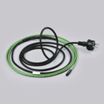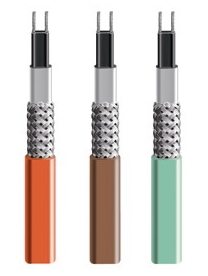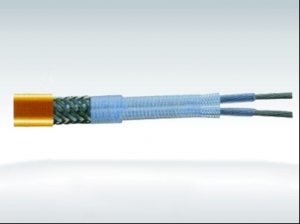You have probably heard on a news program that somewhere a broken icicle killed a person and, unfortunately, such cases occur from time to time.
On the territory of Russia, the climate favors the formation of ice on gutters, roof edges and valleys, therefore, in order to protect passers-by, as well as save the roof from damage, there is an anti-icing system for roofs, which experts will help you install.

The feasibility of using the system


The problems associated with the icing of roofs are by no means one-time, so they have to be dealt with constantly. To install such an anti-icing system on your roof, first of all, it would not hurt to figure out what this system represents.
A list of reasons that speak about the benefits of an anti-icing system
- When ice is formed, quite heavy pieces of ice can break off, which can harm human health and life, architectural structures located below, as well as vehicles parked near the building. (see also article Cleaning the roof from snow and ice: how is this work done?)
- Ice formations constantly build up mass and put pressure on the roof. This can lead to premature wear and damage to the roofing material.
- Due to the icing of the roof edge during a thaw, water accumulates on the roof, which contributes to the premature destruction of the roofing material, and also leads to damage to the ceilings and walls of the apartments on the upper floor. Near the gutters, parts of the facade are destroyed much faster.
- Every summer you have to clean roof from debris accumulating there due to icing of the roofing edge, which leads to premature damage to the roofing material.
What is an anti-icing system

- The anti-icing system for roofs and gutters is a set of accessories that allows you to get rid of ice and snow on the roof and devices associated with it.
- The device includes a cable for heating snow and ice, which has a certain length, adjustable by a coupling.The cable is ready for connection to a network with a voltage of 220V and a frequency of 50Hz.
- The system also includes a thermostat, RCD and magnetic starters.
- Mounting boxes for connecting and branching cables.
- To fasten the system, the kit includes self-tapping screws, dowels, rivets, staples, mounting tape, clips, cables and a swing hook.
Types of cables for the icing system

Roof anti-icing systems are produced by many manufacturers, and for example, we will consider the Finnish system of the ENSTO concern. These cables are supplied with a plug, do not have to be connected to a thermostat and can be installed directly in a drinking water pipe. The rated power of this device is 9W/m, with a maximum voltage of 230V.
| Type of anti-freeze cable | Cable length (m) | Cable power (W) |
| EFPPH2 | 2 | 18 |
| EFPPH4 | 4 | 36 |
| EFPPH6 | 6 | 54 |
| EFPPH10 | 10 | 90 |
| EFPPH15 | 15 | 135 |
| EFPPH20 | 20 | 180 |
Self-regulating heating cables

In this cable, a plastic matrix serves as a heat-generating element. The peculiarity of this cable is that it independently reacts to the ambient temperature and works exactly in the mode that is needed for this case. The cable, depending on the need, can produce from 6 to 90 W/m.
The cable distributes heat in such a way that heating occurs according to the needs of each individual area, in addition, it is flat, which contributes to a good fit to the surface, and ensures greater performance.A self-regulating cable costs a little more than a resistive one, but you always had to pay more for quality, but later such a cable pays off due to energy savings.
When installing such a cable on roofs, anti-icing can be regulated by the length of the cable, that is, it can be cut directly at the installation site, starting from 20 cm and ending with a length of 50-100 m (depending on the type of cable). Cables of this type have one nice feature: during operation, its power exceeds the nominal by 1.5-2 times, since it is in the water.
When installing self-adjusting heating cables for roofing take into account the fact that the starting power of this device can be 2-3 times higher than the nominal power. This should be reflected in the accompanying technical documentation and the type of starters should be taken into account.
Resistive heating cables

In resistive cables, heat is emitted by metal cores covered with heat-resistant plastic. The heat dissipation of the cable is 20-30W/m, depending on the environment and is the same along the entire length of the cable. These cables are very strong and difficult to damage, but their problem is the fixed length of the section. You have to adapt the cable to the length of the drain or the perimeter of the roof.
Advice-recommendation. Do not use systems that do not have certification documents, including a fire safety certificate.
Anti-icing of the roof must be carried out by a system equipped with an RCD or a differential circuit breaker (leakage current not more than 30mA). Recommendation.
Installation of the anti-icing system cables should be carried out during the thaw period or when there is no snow on the roof.
The cable route must run along the entire path of the melting water.
In drains, it should begin with horizontal ebbs and end at the outlet of the downpipe.
Conclusion
Please note that anti-icing of roofs, carried out in accordance with all the instructions and rules prescribed in the accompanying documents, nullifies the maintenance of this system in the winter (working) period.
Did the article help you?
